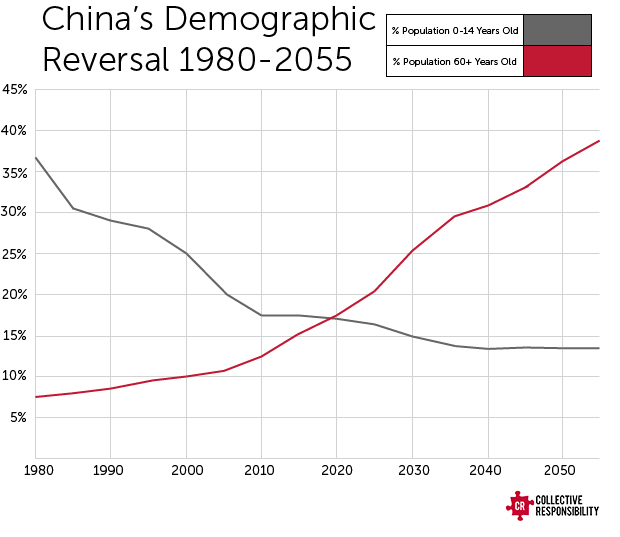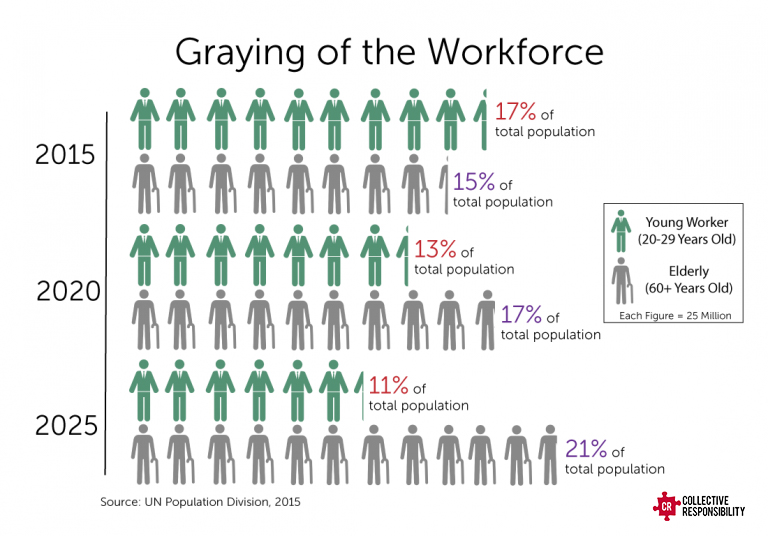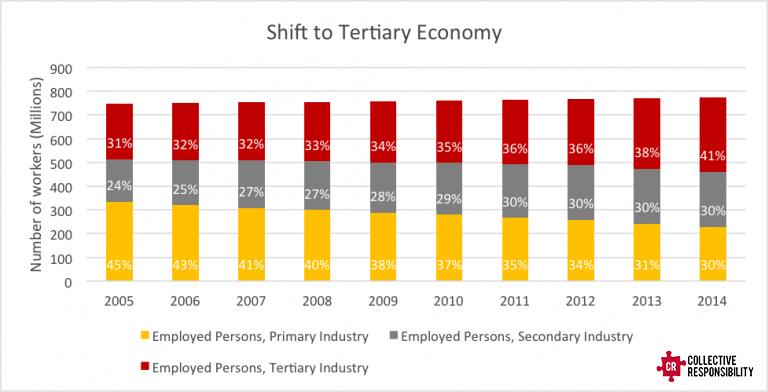China’s elderly population, as discussed in our previous blog post, has far-reaching social, economic, and political implications that have and will continue to shape key areas of Chinese society. The phenomenon of population aging is not unique to China. Economic development is commonly linked to a drop in fertility rates and rise in working age. But the pace at which it aging has occurred in China to date has been unrivaled and accelerated by the introduction of the One-Child Policy.
With the speed of this growth, China’s demographic make up is approaching a critical time. The graph below illustrates this, showing that the proportion of elderly (60 years and older) is projected to overtake the proportion of youths (0-14 years) in 2020.

As a result, the current service and infrastructural inefficiencies will grow in size and speed. An understanding of the current situation is key to the sustainable provision of services so that future systems can be adapted to cope and thrive.
Graying of the Workforce
China’s aging population will reduce the growth of the workforce and change its demographic makeup. The proportion of working-age individuals in the total population will continue to decline as more and more people reach retirement age. At the same time, the retirees are not being replaced at an equal rate by new entrants into the workforce. Figure 2 below shows the simultaneous drop in the number of 20-29 year olds and the increase in the number of 60+ year olds over the next 10 years. Consequentially, not only will the workforce shrink in size, but the average laborer’s age will increase as well. As a result, the young and inexpensive workforce that powered the Chinese economic boom of the past few decades will soon disappear. Chinese labor may become less competitive in the international market, especially in more traditional, labor-intensive industries.

A Natural Solution?
While many of the anticipated consequences of the elderly challenges are daunting, this aging of the workforce may not be as disruptive as expected. It is undeniable that the workforce will age, but many of the issues expected to accompany an aging Chinese workforce might not arise due to the current shifts in the Chinese economy.

China’s recent transformation to a tertiary-based economy, with a greater focus on services, will help lead a natural transition that will likely offset many of the disadvantages of an older workforce.
From “Made in China” to “Created in China”
This natural transition is coupled with a direct push from central government and the establishment of the “Made in China 2025” legislation that aims to move manufacturing up the value chain and into a new era of automation and innovation. China hopes to create, rather than simply make, and to innovate, rather than merely manufacture. These shifting attitude feeds into the changing labor framework, as members of the younger generation are more expectant and educated and less willing to take up the jobs so vitally performed by their parents and grandparents. The transition to a service-heavy economy removes the need for the physical advantages of a youthful workforce, which makes the rising average age of China’s workforce a less critical issue.
We at Collective are eager to observe and study exactly how an ever-rising elderly population will impact the Chinese economy. In the coming months, we hope to continue to provide in-depth insights into the complex elderly challenge in China.
To receive updates about Collective’s ongoing research and insights into the future of China’s labor, migration, and other focus areas, follow us on social media and stay tuned for more article installments.
This article was written by Tim Wang, Research Analyst at Collective Responsibility.
Featured Image Credit: Fang Guo
